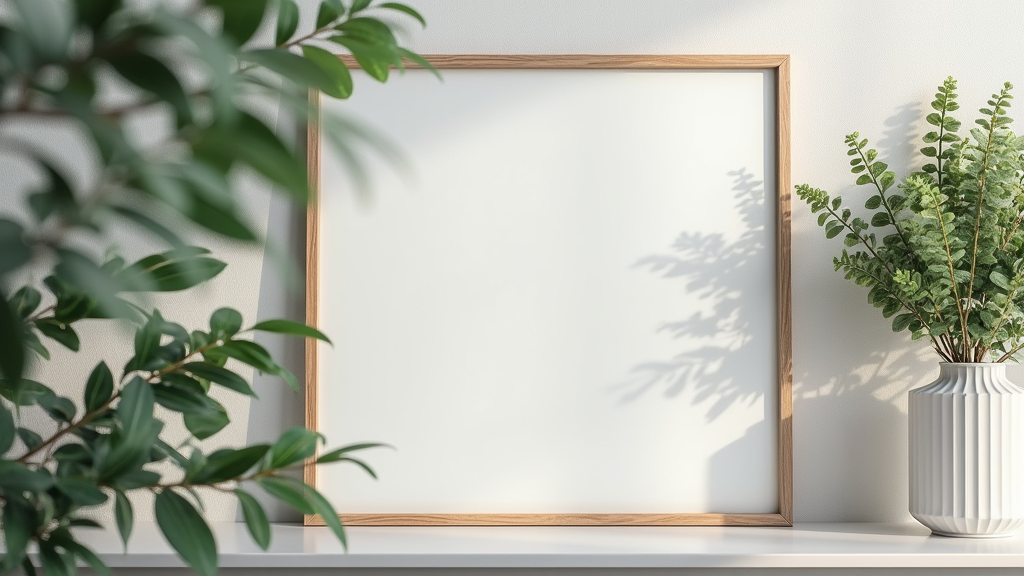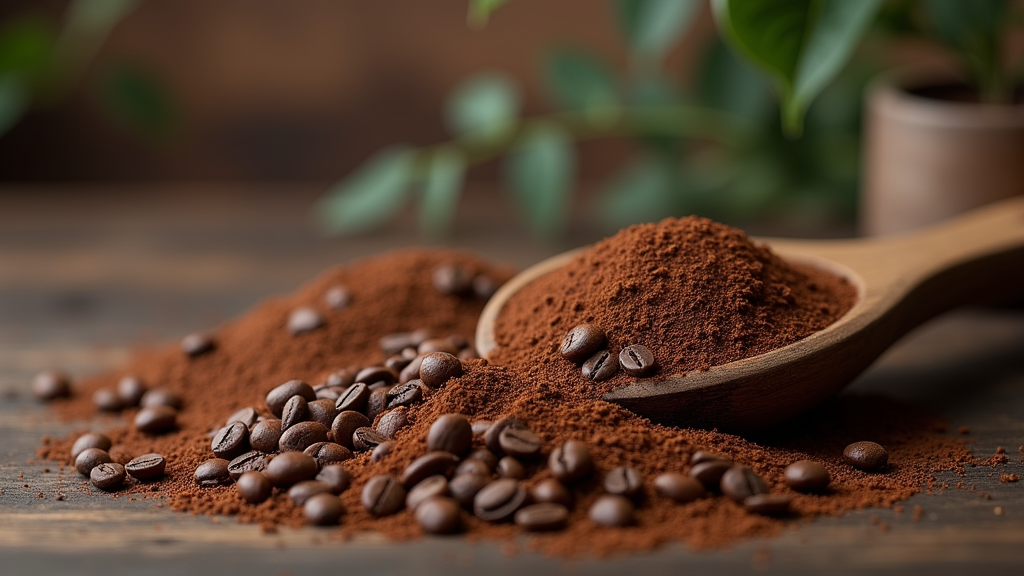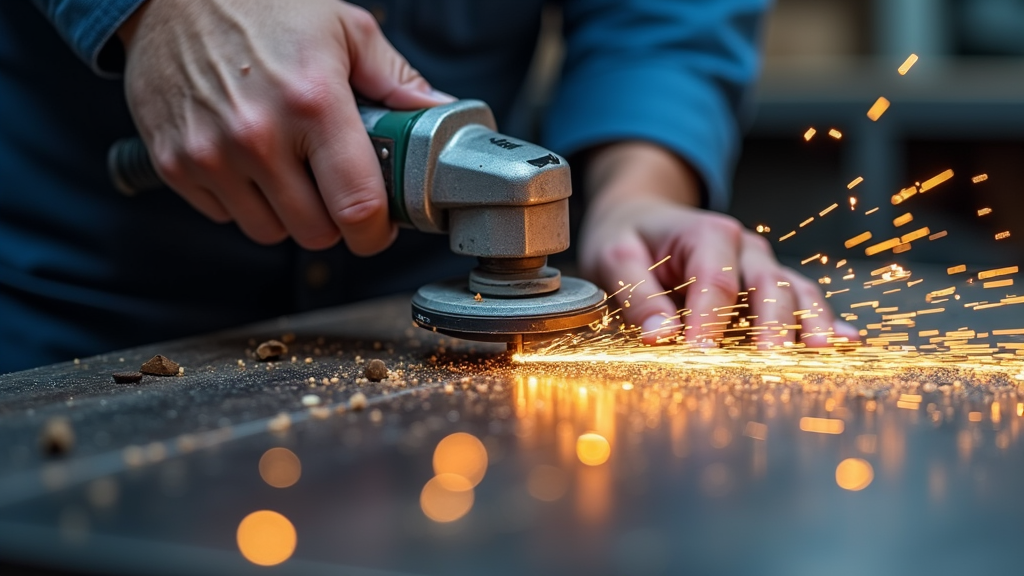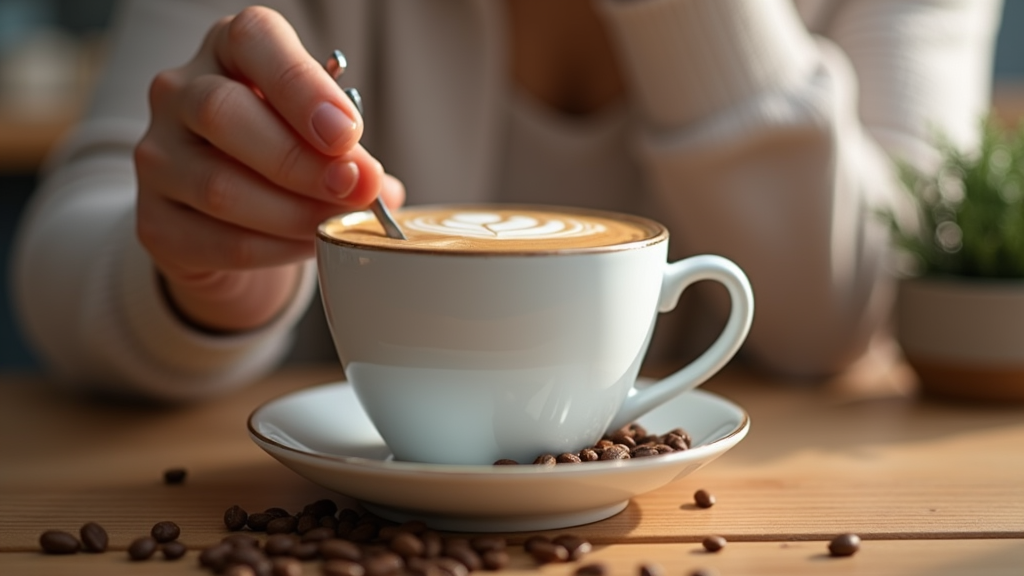Table of Contents
- Introduction
- Understanding Coffee Grind Sizes
- Matching Grind Size to Brewing Methods
- The Science of Grind Size and Flavor
- Practical Tips for Grinding
- Troubleshooting Grind Size Issues
- Adjusting for Coffee Type
- Best Practices for Coffee Brewing
- Conclusion
Introduction

Unlocking Flavor Through Grind Size
Have you ever wondered why your coffee tastes different each time you brew it, even when using the same beans? The secret often lies in the grind size. Coffee grind size plays a pivotal role in the extraction process, dramatically influencing the flavor, aroma, and overall strength of your brew. It’s the key to unlocking the full potential of your coffee beans.
Using the wrong grind size can lead to undesirable results. Grind too fine, and you risk over-extraction, resulting in a bitter and harsh taste. Grind too coarse, and you’ll likely experience under-extraction, leaving you with a sour, weak, and unsatisfying cup. Mastering the art of grind size is essential for achieving coffee perfection.
Understanding the nuances of grind size empowers you to control the brewing process and consistently create delicious coffee tailored to your preferences. It transforms coffee brewing from a simple routine into a flavorful experience.
Why Grind Size Matters
Grind size directly affects how water passes through the coffee grounds and, consequently, the rate at which oils, flavors, and aromas are extracted from the coffee beans. Think of it like this: finer grinds create more surface area, allowing for faster extraction, while coarser grinds offer less surface area and slower extraction.
The solubility of coffee compounds is also heavily influenced by grind size. Different compounds dissolve at different rates, and the grind size determines which compounds are extracted and in what proportion. A properly dialed-in grind size ensures a balanced extraction, capturing the full spectrum of flavors and aromas present in the coffee beans.
What You’ll Learn
In this guide, we’ll embark on a journey to demystify the world of coffee grind sizes. You’ll gain a comprehensive understanding of the different grind sizes, from extra fine to extra coarse, and how each one impacts the final taste of your coffee.
We’ll also explore the art of matching grind size to various brewing methods, ensuring you achieve optimal extraction with your preferred brewing device, whether it’s a French press, pour-over, espresso machine, or anything in between.
Finally, we’ll equip you with the knowledge to troubleshoot common grind size issues, enabling you to diagnose and correct any problems you may encounter along the way. By the end of this guide, you’ll be well-equipped to grind with confidence and brew coffee that consistently delights your taste buds.
Understanding Coffee Grind Sizes
What is Coffee Grind Size?
Coffee grind size refers to how finely or coarsely coffee beans are ground. It’s a crucial factor in brewing because it directly impacts the interaction between water and the coffee grounds. Think of it this way: the grind size determines how much surface area of the coffee bean is exposed to the water during the brewing process.
A finer grind exposes more surface area, leading to a faster extraction. Conversely, a coarser grind exposes less surface area, resulting in a slower extraction. Understanding this relationship is key to achieving the desired flavor profile in your coffee.
Impact on Flavor and Extraction
The grind size significantly influences the flavor and extraction of your coffee. Choosing the right grind for your brewing method is essential for a balanced and delicious cup.
Fine grinds, like those used for espresso, have a larger surface area. This leads to quicker extraction, which can result in richer, more intense flavors. However, if the extraction goes too far, it can also lead to bitter and astringent notes.
Coarse grinds, on the other hand, have a smaller surface area and a slower extraction rate. This highlights the brighter, more acidic qualities of the beans. Coarse grinds are often used in methods like French press, where the coffee is steeped for a longer period.
Medium grinds offer a balance between fine and coarse. They provide a well-rounded flavor profile with a good balance of acidity, sweetness, and body. This grind size is versatile and suitable for drip coffee makers and pour-over methods.
Visual Guide to Grind Sizes
To better understand the differences, here’s a visual guide to common coffee grind sizes:
- Extra Fine:This grind is almost like powder and is typically used for Turkish coffee.
- Fine:Similar to table salt, this grind is ideal for espresso machines.
- Medium-Fine:A slightly coarser version of fine, suitable for Moka pots and some espresso machines.
- Medium:Resembling coarse sand, this is a versatile grind for drip coffee makers and pour-overs.
- Coarse:Similar to sea salt, this grind is best for French presses and cold brew.
Matching Grind Size to Brewing Methods

French Press
For the beloved French Press, a <strong>coarse grind</strong> is your best friend. This isn’t just a suggestion; it’s crucial for achieving that full-bodied, robust flavor that French Press enthusiasts crave, and it helps prevent the dreaded clogging.
The rationale behind the coarse grind lies in the immersion brewing method of the French Press. Coffee grounds are steeped in hot water for several minutes. A finer grind would lead to over-extraction during this prolonged immersion, resulting in a bitter and muddy cup. The coarse grind slows down the extraction process, allowing for a balanced and flavorful brew.
Drip Coffee Makers/ Pour-Over
When it comes to drip coffee makers and the art of pour-over, a <strong>medium grind</strong> is the sweet spot. This grind size ensures even saturation of the coffee grounds and promotes consistent extraction.
The goal is to balance the extraction time. A medium grind allows the water to flow through the grounds at an optimal rate, extracting the desired flavors without over or under-extracting. This results in a well-rounded flavor profile that highlights the nuances of your chosen coffee beans.
Espresso Machines
Espresso machines demand precision, and that starts with a <strong>fine grind</strong>. This is essential for achieving the quick extraction under the high pressure that espresso is known for.
The fine grind maximizes the surface area of the coffee grounds, allowing for rapid and intense flavor extraction when hot water is forced through them at high pressure. This process creates the concentrated, rich, and aromatic espresso shot we all love.
AeroPress
The AeroPress is a versatile brewing method, and as such, it offers flexibility in grind size. A <strong>fine to medium grind</strong> generally works best, but the ideal grind size can be adjusted based on your brewing preferences.
Experimentation is key with the AeroPress. A finer grind will result in a quicker, more intense extraction, while a medium grind will offer a more balanced and nuanced flavor. Play around with different grind sizes to discover what suits your taste best.
Cold Brew
For cold brew, a <strong>coarse grind</strong> is the way to go. This helps avoid over-extraction and bitterness during the long steeping times that characterize this brewing method.
Cold brew involves steeping coffee grounds in cold or room-temperature water for an extended period, typically 12-24 hours. A finer grind would lead to excessive extraction during this prolonged brewing, resulting in a bitter and unpleasant taste. The coarse grind ensures a smoother, sweeter, and less acidic cold brew concentrate.
Turkish Coffee
Turkish coffee requires an <strong>extra fine grind</strong>, almost like a powder. This is crucial for the rapid brewing and deep flavor extraction that defines this traditional method.
The extremely fine grind maximizes the surface area of the coffee grounds, allowing for maximum flavor extraction in a very short amount of time. This results in the intense, rich, and sediment-filled cup of coffee that is characteristic of Turkish coffee.
Moka Pot
The Moka Pot, also known as a stovetop espresso maker, thrives with a <strong>medium-fine grind</strong>. This ensures good extraction without the intensity of a true espresso.
The medium-fine grind strikes a balance, allowing for a strong and flavorful brew without being overly intense. It allows the water to pass through the coffee grounds at a rate that produces a concentrated coffee, without the high pressure of an espresso machine. This results in a robust and satisfying cup.
The Science of Grind Size and Flavor
Extraction Rates and Flavor Profiles
The size of your coffee grounds plays a pivotal role in determining the final flavor profile of your brew. This is primarily due to the varying extraction rates associated with different grind sizes. Think of it this way: the finer the grind, the more surface area is exposed to the water, leading to a faster extraction.
Fine grinds, resembling the texture of table salt, offer a vast surface area. This rapid extraction is ideal for brewing methods like espresso, where the contact time between water and coffee is short. The result is a concentrated, robust flavor, often with a bold body and intense aroma. However, be cautious, as over-extraction with fine grinds can lead to a bitter taste.
On the other end of the spectrum, coarse grinds, similar to sea salt, have a significantly smaller surface area. This leads to a slower, more gradual extraction. Brewing methods like the French press benefit from this slower extraction, allowing for a more subtle and nuanced flavor profile. Coarse grinds tend to emphasize the smoother, more delicate notes of the coffee, producing a less acidic and more balanced cup.
Medium grinds strike a balance between fine and coarse, offering a moderate surface area and a balanced extraction rate. This versatility makes them suitable for a wide range of brewing methods, including drip coffee makers and pour-over systems. Medium grinds typically result in a well-rounded cup with a good balance of acidity, body, and flavor.
Impact on Coffee Compounds
The grind size not only affects the speed of extraction but also influences which coffee compounds are extracted and in what order. This is crucial because different compounds contribute unique characteristics to the final flavor.
With fine grinds, the soluble acids are extracted quickly and efficiently. This can lead to a brighter, more acidic cup of coffee. However, if the extraction goes too far, undesirable bitter compounds can also be extracted, resulting in an unbalanced flavor. Therefore, precision is key when using fine grinds.
Coarse grinds, on the other hand, extract the less soluble, bitter compounds at a much slower rate. This allows for a sweeter, less bitter cup of coffee. However, under-extraction with coarse grinds can lead to a weak, sour, and underdeveloped flavor.
The Role of Water Temperature
Water temperature is another critical factor that interacts with grind size to influence the extraction process. The ideal water temperature range for coffee brewing is generally between 195-205°F (90-96°C). However, the optimal temperature can vary depending on the grind size and brewing method.
For finer grinds, a slightly lower water temperature within the optimal range may be preferred to prevent over-extraction and bitterness. This is because the faster extraction rate of fine grinds means that the coffee compounds are extracted more quickly, and a lower temperature can help to slow down the process and prevent the extraction of undesirable compounds.
Conversely, for coarser grinds, a slightly higher water temperature within the optimal range may be beneficial to ensure adequate extraction. This is because the slower extraction rate of coarse grinds means that the coffee compounds need more energy to be extracted, and a higher temperature can help to provide that energy.
Ultimately, experimenting with water temperature within the recommended range, in conjunction with adjusting your grind size, is essential to dialing in the perfect cup of coffee for your preferred brewing method and taste preferences.
Practical Tips for Grinding

Choosing the Right Grinder
Selecting the right grinder is paramount to achieving a consistently excellent cup of coffee. The market offers two primary types: burr grinders and blade grinders. Understanding the difference is crucial.
Burr grinders utilize two revolving abrasive surfaces, or “burrs,” to uniformly crush coffee beans to a consistent size. This method provides a much more controlled and predictable grind, making it suitable for all brewing methods, from the fine grind needed for espresso to the coarser grind ideal for French press.
Blade grinders, on the other hand, operate much like a food processor, using a spinning blade to chop the beans. This often results in an uneven grind, with some particles being too fine and others too coarse. While blade grinders are typically more affordable, they are less ideal for those seeking consistent brewing results.
For the best possible flavor and consistency, we strongly recommend investing in a quality burr grinder. While the initial investment may be higher, the improvement in your coffee’s quality will be well worth it.
Grinding Fresh
One of the most impactful things you can do to improve your coffee is to grind your beans fresh, just before brewing. This simple step makes a world of difference in retaining the coffee’s volatile aromatic compounds, which are responsible for its complex flavors and aromas.
Think of it this way: once coffee is ground, it begins to lose its freshness rapidly. To maximize flavor, consider the “15-15-15 rule.” This guideline suggests using ground coffee within 15 minutes of grinding, drinking your brewed coffee within 15 minutes of brewing, and consuming roasted coffee beans within 15 days of roasting for optimal flavor.
While the 15-day rule is more of a guideline, the 15-minute rules for grinding and brewing are very important for capturing the most flavor from your beans.
Experimenting with Grind Sizes
Finding the perfect grind size for your chosen brewing method is part art, part science. It requires a bit of experimentation, but the reward is a cup of coffee tailored precisely to your taste.
Start with a baseline grind size recommended for your brewing method (e.g., medium-fine for pour-over, coarse for French press). Brew a cup and carefully evaluate the flavor. Is it too bitter? Too sour? Weak? These characteristics can indicate that your grind size needs adjustment.
Make small adjustments to your grind size and note the impact on the flavor. A finer grind can lead to over-extraction and bitterness, while a coarser grind can result in under-extraction and sourness. The goal is to find the sweet spot where the coffee is balanced and flavorful.
To keep track of your experiments, consider keeping a coffee journal. Note the date, coffee origin, brewing method, grind size, and your tasting notes. Over time, you’ll develop a keen understanding of how grind size affects the final cup and refine your preferences.
Grinder Maintenance
Regular grinder maintenance is essential for both maintaining the quality of your coffee and ensuring the longevity of your grinder. Residual coffee oils and grounds can accumulate over time, affecting the taste of your coffee and potentially clogging the grinder’s mechanism.
We recommend cleaning your coffee grinder every few weeks, depending on how frequently you use it. This can be done by disassembling the grinder (following the manufacturer’s instructions) and brushing away any loose grounds. For a more thorough cleaning, you can use a grinder cleaning product or even uncooked rice (run a small amount through the grinder to absorb oils and grounds).
In addition to cleaning, it’s also important to be mindful of heat build-up in the grinder. Grinding coffee generates heat, which can scorch the beans and negatively affect the flavor. Avoid grinding large quantities of coffee at once, and allow the grinder to cool down between batches if necessary.
Troubleshooting Grind Size Issues
Identifying Over-Extraction
A bitter taste in your coffee is a telltale sign of over-extraction. This happens when the water has been in contact with the coffee grounds for too long, or the grind is too fine, pulling out undesirable compounds. The result is a cup that lacks sweetness and is dominated by harsh, bitter notes.
Solution: The simplest solution is to adjust to a coarser grind size. A coarser grind reduces the surface area exposed to the water, slowing down the extraction process and preventing over-extraction. Make small adjustments and taste the difference until you achieve a balanced flavor profile.
Identifying Under-Extraction
On the opposite end of the spectrum, a weak or sour taste indicates under-extraction. This means the water hasn’t had enough contact time with the coffee grounds to extract all the desirable flavors. The coffee may taste thin, acidic, and lack body.
Solution: Adjust to a finer grind size. A finer grind increases the surface area, allowing for more thorough extraction. Again, make small adjustments and taste the results until the sourness disappears and the coffee develops a fuller, more rounded flavor.
Inconsistent Brews
Are you experiencing brews that vary wildly in taste, even when using the same coffee and brewing method? Inconsistent brews can often be traced back to grind size inconsistency. This can be due to a number of factors, but a common culprit is a dirty or misaligned grinder.
Solution: Ensure your grinder is clean and properly aligned. Coffee oils and fines can build up over time, affecting the grinder’s performance and leading to inconsistent particle sizes. Regularly clean your grinder according to the manufacturer’s instructions. If you suspect misalignment, consult your grinder’s manual or a professional for assistance.
Slow Brewing
If your coffee is brewing exceptionally slowly, taking much longer than usual to drip through, the grind size is likely too fine. The densely packed grounds restrict water flow, leading to a prolonged brewing time and potentially over-extracted coffee.
Solution: Adjust to a coarser grind size. A slightly coarser grind will create more space between the coffee particles, allowing for better water flow and a more efficient brewing process. This will help to prevent over-extraction and ensure a more balanced cup.
Grounds in the Cup
Finding sediment or coffee grounds in your finished cup is an unpleasant experience. This usually indicates that the grind size is too fine for the brewing method you’re using. The fine particles are able to pass through the filter, ending up in your cup.
Solution: Match the grind size to the specific brewing method. For example, a French press requires a coarse grind to prevent grounds from passing through the mesh filter. A paper filter pour-over, on the other hand, can handle a medium-fine grind. Refer to our grind size guide (above) for specific recommendations.
Lack of Crema (Espresso)
For espresso lovers, a rich, golden crema is a sign of a perfectly pulled shot. If you’re consistently getting little to no crema, even with fresh beans, the grind size could be the issue.
Solution: Experiment with slightly finer grinds. A finer grind creates more resistance, building up the pressure needed to extract the oils and gases that contribute to crema formation. Make small adjustments and observe the results. Be careful not to grind too finely, as this can lead to channeling and a bitter, uneven extraction.
Adjusting for Coffee Type

Roast Level
The roast level of your coffee beans significantly impacts their structure and solubility, which in turn affects the ideal grind size. Darker roasts, having been exposed to more heat, tend to be more brittle and porous. This increased fragility means they often require a coarser grind than lighter roasts. Grinding dark roasts too finely can lead to over-extraction, resulting in a bitter and unpleasant taste. Conversely, lighter roasts, being denser and less soluble, generally benefit from a finer grind to maximize flavor extraction and achieve a balanced cup.
Origin
The origin of your coffee beans plays a crucial role in determining their unique characteristics. Different regions produce beans with varying densities, moisture content, and flavor profiles. These variations often necessitate slight grind size adjustments to achieve optimal flavor extraction. For example, African coffees, known for their bright acidity and complex flavors, might require a slightly finer grind to fully unlock their potential. Conversely, some South American coffees, with their nutty and chocolatey notes, might perform better with a slightly coarser grind. Experimentation and careful tasting are key to finding the sweet spot for each origin.
Bean Density
Bean density is a crucial factor influencing the ideal grind size. Denser beans, which are often found in high-altitude growing regions, require more effort to extract their flavors. These beans typically benefit from a finer grind to increase the surface area exposed to the water, ensuring a more thorough extraction. If you’re using denser beans and find your coffee tasting weak or sour, try grinding finer. Conversely, less dense beans extract more easily and may become bitter if ground too finely. Adjusting your grind size based on bean density is essential for achieving a balanced and flavorful cup of coffee.
Best Practices for Coffee Brewing
Water Quality
The quality of your water significantly impacts the taste of your coffee. Impurities and minerals in tap water can interfere with the coffee’s natural flavors, resulting in a less enjoyable cup. Using filtered water is highly recommended to remove these unwanted elements and allow the true essence of the coffee to shine through. Whether you use a water filter pitcher or a filtration system, ensuring your water is clean and fresh is a crucial first step in brewing exceptional coffee.
Coffee-to-Water Ratio
Achieving the correct coffee-to-water ratio is essential for optimal extraction. Too little coffee results in a weak, under-extracted brew, while too much coffee leads to a bitter, over-extracted taste. The standard ratio to aim for is between 1:15 and 1:18 (coffee to water). This means for every 1 gram of coffee, you should use 15 to 18 grams of water. Experiment within this range to find the ratio that best suits your taste preferences and the specific coffee beans you’re using. Using a kitchen scale to measure both coffee and water is highly recommended for consistent results.
Brewing Time
Brewing time is a critical factor that varies depending on the brewing method you’re using. Different methods require different contact times between the water and coffee grounds to achieve the desired extraction. For example, espresso typically requires a brewing time of 25-30 seconds, while a French press needs around 4 minutes of steeping. Adjusting the brew time according to the method ensures that the coffee is neither under-extracted (sour and weak) nor over-extracted (bitter and harsh). Always consult the recommended brewing time for your chosen method and adjust slightly based on your taste preferences.
Bean Storage
Proper storage is vital to preserving the freshness and flavor of your coffee beans. Coffee beans are susceptible to degradation from exposure to air, light, moisture, and heat. To protect your beans, store them in an airtight container away from direct sunlight and moisture. A dark, cool pantry is an ideal location. Avoid storing beans in the refrigerator or freezer, as condensation can damage their flavor. Buying smaller quantities of beans more frequently ensures that you’re always brewing with fresh, flavorful coffee.
Conclusion

Recap of Key Points
Throughout this guide, we’ve emphasized the critical role grind size plays in achieving optimal coffee flavor. The size of your coffee grounds directly impacts the extraction process, influencing everything from the coffee’s strength and body to its overall balance and nuance. Remember, a grind that’s too coarse can lead to under-extraction, resulting in weak, sour coffee. Conversely, a grind that’s too fine can cause over-extraction, producing bitter, harsh flavors.
We’ve also explored the importance of matching your grind size to your chosen brewing method. From the coarse grind ideal for French presses and cold brew to the fine grind required for espresso machines, understanding these pairings is essential for consistent, delicious results. Using the wrong grind size for your brewing method can lead to unsatisfactory results, regardless of the quality of your beans.
Finally, we’ve provided tips for troubleshooting common grind size issues. Whether you’re dealing with channeling in your espresso or sediment in your French press, adjusting your grind size is often the first and most effective step towards resolving these problems. Learning to recognize the signs of improper extraction and knowing how to correct them is a crucial skill for any home barista.
Final Thoughts
Ultimately, the journey to brewing the perfect cup of coffee is a continuous learning experience. By carefully managing your grind size, along with other key factors such as water temperature, coffee-to-water ratio, and brew time, you can significantly enhance the taste and enjoyment of your daily coffee ritual. Don’t be afraid to experiment with different grind settings and brewing parameters to discover what works best for your palate and your preferred brewing methods.
The world of coffee is vast and varied, offering endless opportunities for exploration and discovery. Embrace the process, trust your taste buds, and enjoy the rewarding experience of crafting exceptional coffee at home. Your perfect cup awaits!

